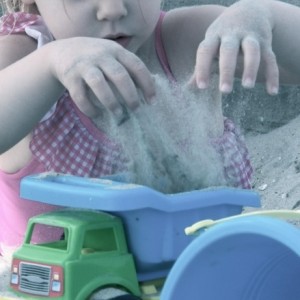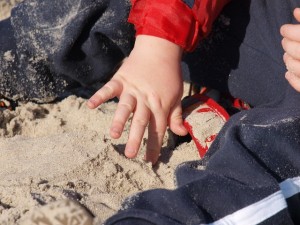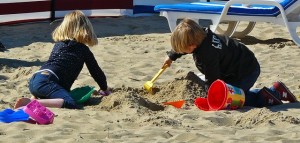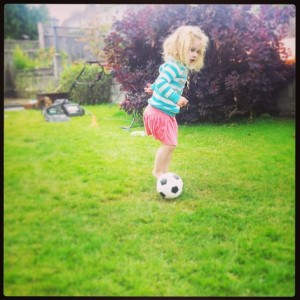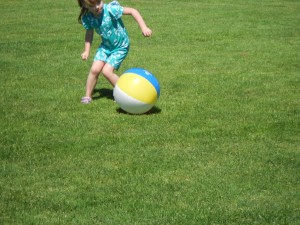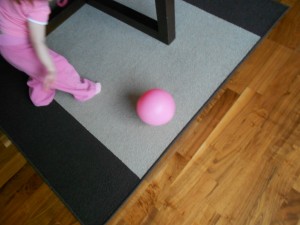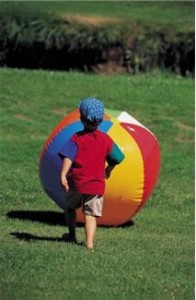Science kits and tools for kids do not need to be expensive and elaborate; science play with paper tubes is easy, simple, and very inexpensive. Paper tubes and rolls are often just thrown in the recycling or trash but they can be fun for kids.
One of the first things that kids learn with tubes is that they roll. They are fun to roll over the floor or with a big piece of cardboard propped up against a sofa, kids can let the tubes, and the science, roll on down. Up doesn’t work at all, when tossed, the tubes won’t fly. They don’t stack very well either.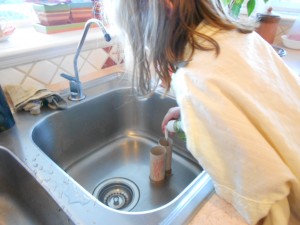
Big Sister made her own exploration to see what paper rolls would do in water. She stood the rolls in the sink and squirted soap inside. She discovered the soap stayed there until she lifted up the rolls when she could see it then spread out.
Long tubes are also fun to roll stuff down, like cars, marbles, little bouncy balls, or rocks, but that’s best done outside. It’s obvious to us, but kids are testing over and over the idea that objects will go down. There’s lots of experimenting by holding tubes almost flat and at different heights to see how much slope there needs to be for things to keep rolling. Older kids can make their own marble mazes or runs and make the marbles or other objects drop and change directions. The little boy in this video (38 seconds) used an acorn.
Long paper tubes make great swords and kids learn from experience that even though they are light and made out of paper and can be squished flat when stepped on, they will still knock big things over. This is the science principle of cause and effect.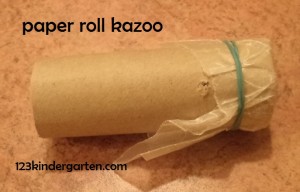
Short paper rolls can be used for kazoos. Wrap a square of waxed paper over the end with an elastic band. Near the end with the waxed paper, adult hands need to make a small hole but kids can do the humming.
Kids will come up with their own ideas of what to do. Do you have a suggestion to share for science play with paper tubes?
Rollin’, rollin’, rollin’ with more ideas for science fun and play on 123 kindergarten’s blog.

